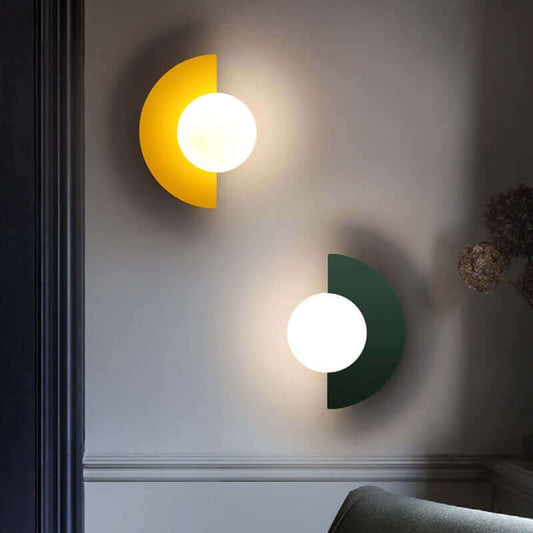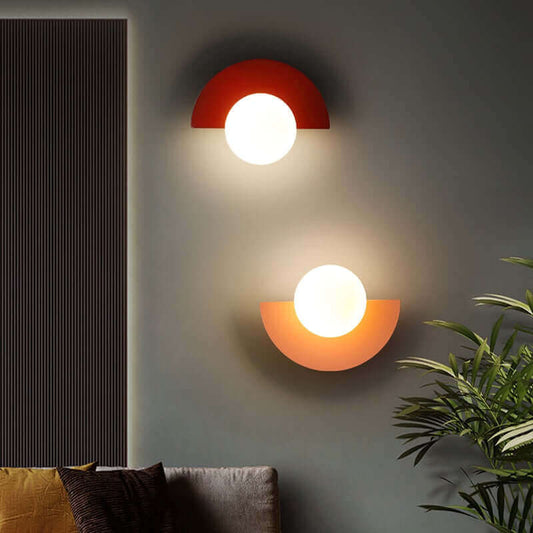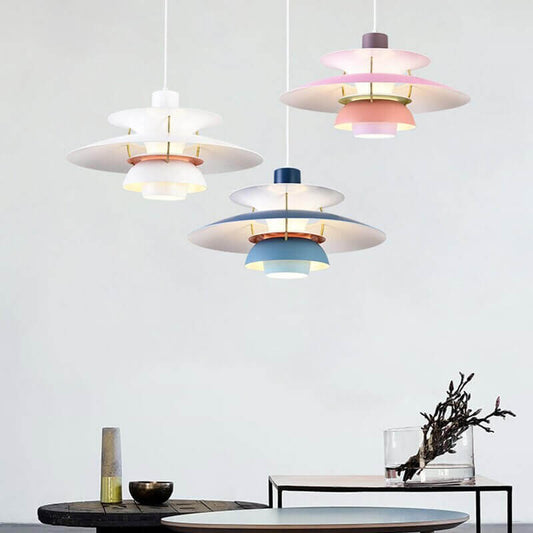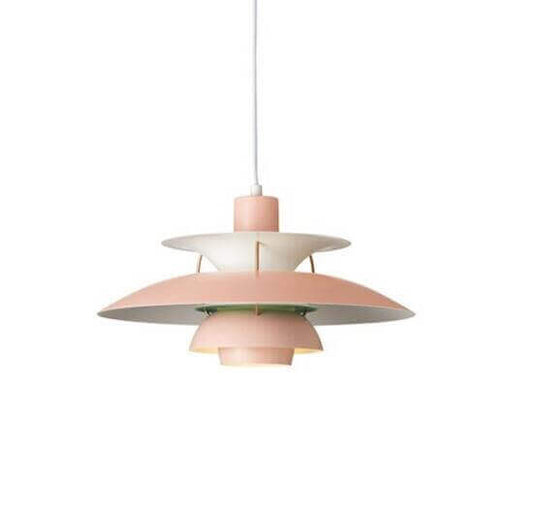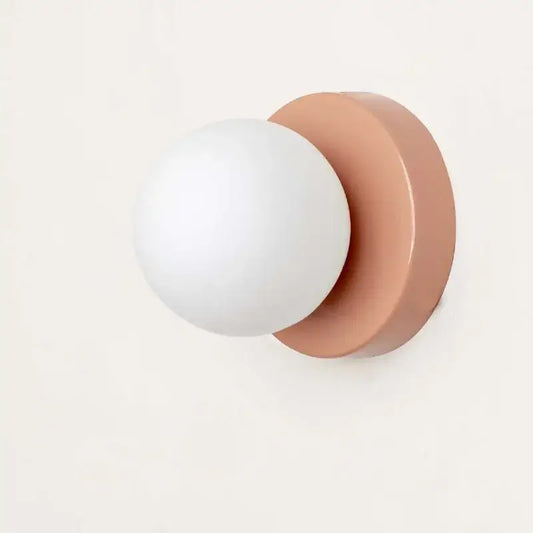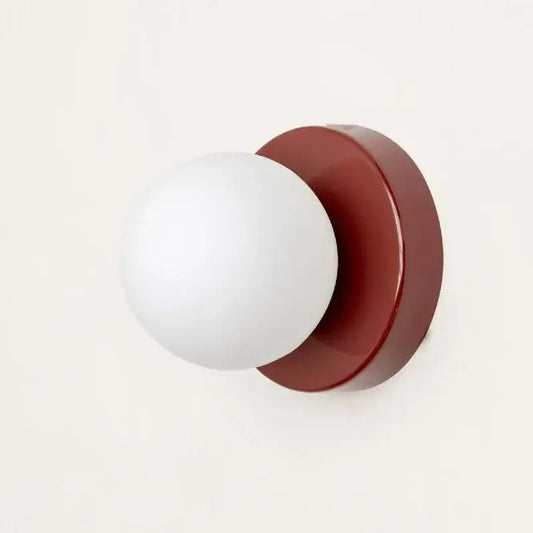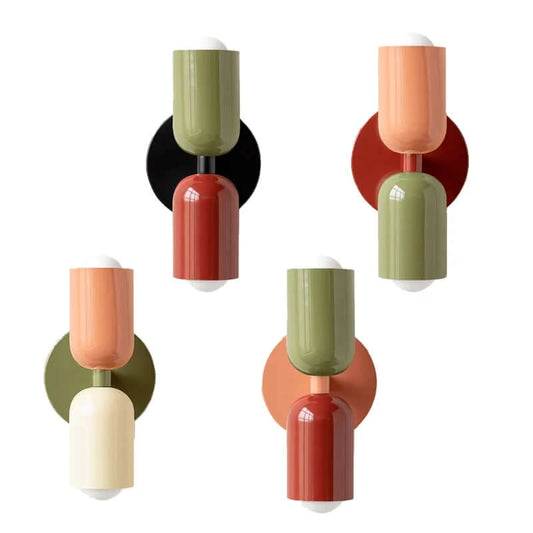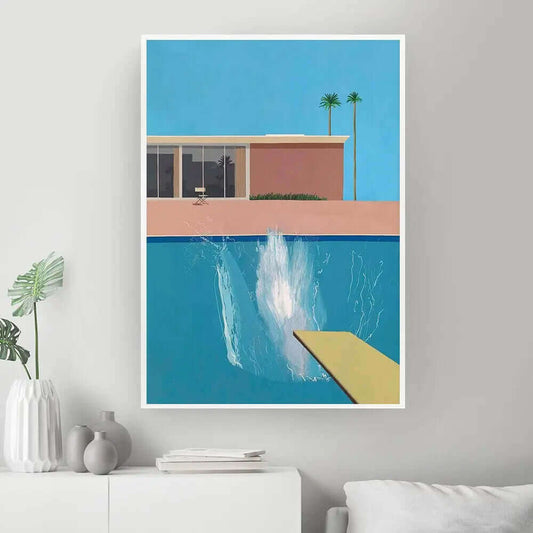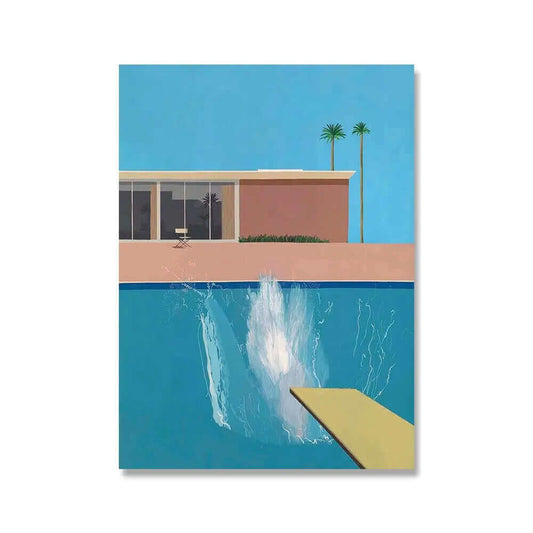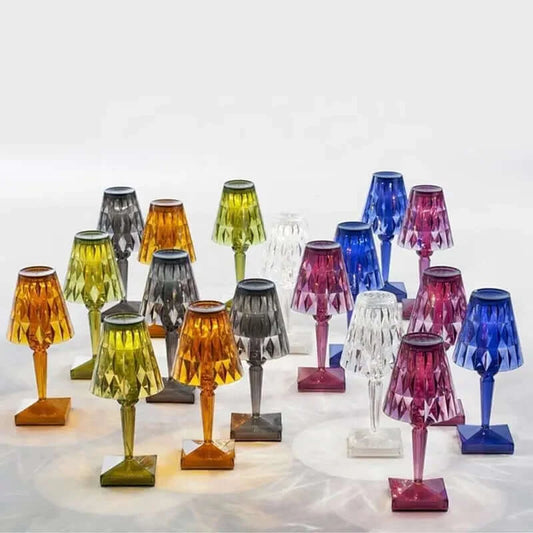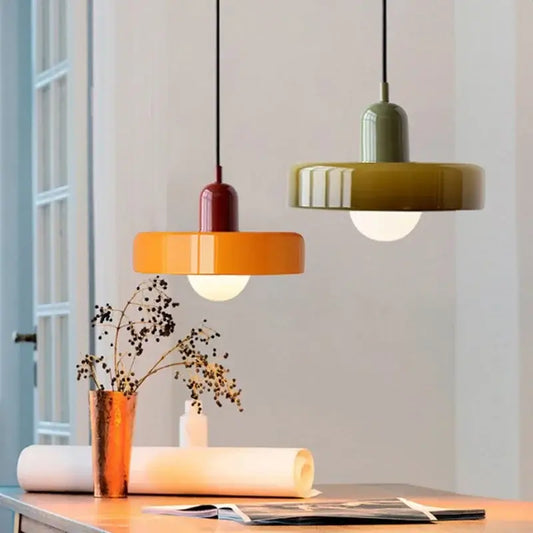A beautiful space is not a result of mere chance or coincidence. It is a product of deliberate choices, bold decisions, and careful attention to detail. From picking the right suppliers to emphasizing lighting and decorative accessories, every element plays a crucial role in transforming a space into something truly extraordinary. Additionally, wall treatments, such as wallpaper and paint, contribute to the overall aesthetic, adding depth and character. In this article, we explore the importance of these factors and how they can elevate any space to new heights of beauty and style.
Choosing the Right Suppliers:
When it comes to creating a visually stunning space, the choice of suppliers becomes paramount. Opting for suppliers who specialize in a specific style ensures access to a wide range of products that align with your vision. One such exceptional supplier that stands out in the realm of curated modern and retro homeware is Nauradika. With its unwavering commitment to offering top-notch products and exceptional customer service, Nauradika has established itself as a go-to destination for individuals seeking to elevate their living spaces.
Nauradika prides itself on curating a beautiful collection of modern lighting fixtures that can effortlessly transform any room into a captivating haven. From elegant pendant lights to chic chandeliers and stylish floor lamps, Nauradika offers a diverse range of lighting options to suit various aesthetics and preferences. Whether you're aiming for a minimalist, mid-century modern, or bohemian vibe, Nauradika's carefully selected lighting fixtures are designed to add an extra touch of elegance and ambiance to your space.
But Nauradika doesn't stop at providing exceptional products; they go above and beyond to offer a wealth of advice and inspiration through their free online magazine. Bursting with valuable insights and design tips, this magazine serves as a valuable resource for anyone seeking guidance on creating a visually stunning space. Whether you're looking for ideas on furniture arrangement, color palette selection, or incorporating statement pieces, Nauradika's online magazine offers a treasure trove of knowledge to help you bring your design vision to life.
Collaborating with suppliers like Nauradika who understand and specialize in specific styles, such as mid-century modern and retro, ensures that you have access to unique and high-quality options that perfectly align with your aesthetic goals. With Nauradika's curated collection of homeware, you can confidently curate a cohesive and captivating interior that reflects your personal style and taste. From furniture to accessories, Nauradika's commitment to quality and attention to detail shines through, making them a trusted partner in the journey of creating a visually stunning space.
The Power of Lighting:
Lighting serves as both a functional and decorative element in any space. Thoughtfully selecting lighting fixtures that complement the overall style can create a captivating ambiance. Nauradika, a leading supplier of curated modern and retro homeware, offers a diverse range of lighting options across various categories to suit different preferences and design aesthetics.
One popular category of lighting fixtures is chandeliers. These grand and elegant fixtures serve as statement pieces, adding a touch of glamour and sophistication to any room. Whether you prefer a crystal-embellished chandelier for a luxurious feel or a sleek and modern design for a contemporary look, Nauradika's collection of chandeliers offers a wide array of options to suit different styles and spaces.
Another category to consider is wall sconces. These fixtures are perfect for adding a touch of elegance and personality to your walls. Wall sconces can be used to create ambient lighting or as accent lighting to highlight specific areas or architectural features. Whether you desire a vintage-inspired sconce for a retro vibe or a minimalist and sleek design for a modern look, Nauradika provides a curated selection of wall sconces to suit various design preferences.
Table and desk lamps are essential lighting fixtures that combine functionality and style. They provide task lighting for activities such as reading or working, while also enhancing the overall aesthetic of the space. Nauradika offers an array of table and desk lamps, ranging from minimalist designs with clean lines to bold and artistic pieces that serve as decorative focal points in their own right.
Floor lamps are another category worth exploring. These tall and versatile fixtures provide both ambient and task lighting, and they can be placed strategically to illuminate specific areas or create a cozy corner. From sleek and modern floor lamps to vintage-inspired designs, Nauradika's collection offers a variety of options to suit different interior styles and personal preferences.
In addition to these categories, accent lighting plays a crucial role in enhancing the overall aesthetic of a space. By using accent lighting, such as spotlights or adjustable track lighting, you can highlight specific architectural features, artwork, or decorative elements, creating focal points that draw the eye and enhance the overall ambiance.
By exploring the different categories of lighting fixtures available at Nauradika, you can play with various options to transform your space and evoke different moods throughout the day. Whether you're seeking a glamorous chandelier, a decorative wall sconce, a functional table lamp, or an ambient floor lamp, Nauradika's curated collection offers a range of choices to suit your style and lighting needs. By carefully selecting and placing lighting fixtures, you can create a captivating and well-lit space that reflects your unique aesthetic and enhances the overall beauty of your home.
Decorative Accessories:
Decorative accessories are the finishing touches that infuse personality and character into a space. They are the elements that truly make a house feel like a home. When it comes to enhancing the visual appeal of your space, Nauradika, a renowned supplier of curated modern and retro homeware, offers a delightful selection of decorative accessories that can elevate your interior design to new heights.
Vases are versatile decor items that can bring life and vibrancy to any room. From sleek and minimalist designs to intricate and artistic creations, Nauradika offers a range of vases to suit various styles and preferences. Fill them with fresh flowers or elegant foliage to add a natural and refreshing touch to your space. The choice of vase can also contribute to the overall aesthetic – a sleek and modern vase can complement a contemporary decor theme, while a vintage-inspired or artisanal piece can add a touch of nostalgia and warmth.
Candle holders are another essential decorative accessory that can create an enchanting atmosphere in any space. Nauradika offers an array of candle holders, ranging from sleek and minimalist designs to ornate and intricate patterns. The soft, flickering glow of candlelight adds a cozy and intimate ambiance, perfect for creating a relaxing and inviting atmosphere in living rooms, bedrooms, or dining areas. Select candle holders that align with your chosen style and experiment with different sizes and shapes to create an eye-catching display.
Textiles, such as cushions and throws, are not only functional but also serve as decorative accessories that can inject color, pattern, and texture into your space. Nauradika offers a curated selection of textiles that can instantly transform the look and feel of a room. Whether you prefer bold and vibrant patterns or soft and subtle hues, incorporating cushions and throws can add warmth and personality to your furniture and create a cozy and inviting atmosphere.
When selecting decorative accessories, it's important to consider the overall style and color scheme of your space. Pay attention to the materials and textures of the accessories to ensure they harmonize with the existing elements in the room. Thoughtfully placed accessories can add depth, interest, and visual intrigue, transforming an ordinary space into an extraordinary one.
Nauradika's collection of decorative accessories provides an opportunity to infuse your space with unique and carefully curated pieces. Whether it's a sculptural art piece that serves as a focal point, a stunning vase that brings nature indoors, or a collection of cushions and throws that adds comfort and style, these accessories reflect your personal taste and make a significant impact on the overall ambiance of your space.
Decorative accessories play a vital role in enhancing the overall aesthetic of a space. By incorporating unique sculptures, vases, candle holders, and textiles, you can infuse personality and character into your home. Nauradika's thoughtfully curated selection offers a wide range of options to suit different styles and preferences, allowing you to add those finishing touches that truly make your space come alive. By paying attention to color schemes, textures, and materials, you can create a cohesive and harmonious look, transforming your space into a haven of beauty and individuality.
Wall Treatments: Wallpaper, Paint, and Beyond
Wallpaper:
Wallpaper is a versatile and impactful wall treatment that offers an array of patterns, colors, and textures to instantly transform a room. Throughout the ages, wallpaper has evolved, showcasing a rich history and diverse range of styles. From traditional floral prints to contemporary geometric designs, wallpaper has the power to set the tone, create focal points, and infuse a space with personality and visual interest.
One fascinating aspect of wallpaper is the variety of types available, each with its own unique characteristics. Historic wallpaper styles, such as damask, toile, and chinoiserie, have been beloved for centuries, exuding timeless elegance and sophistication. These styles often feature intricate patterns and rich color palettes, adding a touch of grandeur to any space. On the other hand, modern wallpaper designs embrace minimalism, abstract motifs, and bold graphics, catering to contemporary aesthetics and offering a fresh take on wall decor.
The techniques used to create wallpaper have also evolved over time. Traditional methods include block printing, where patterns are carved onto wooden blocks and then stamped onto the paper, resulting in intricate and detailed designs. Another technique is screen printing, where screens are used to apply multiple layers of color, allowing for vibrant and complex patterns. In recent years, digital printing has become increasingly popular, enabling the production of highly detailed and customized wallpapers.
When considering the practicality of wallpaper, it's worth noting that advancements in technology have made it more affordable and easier to apply than ever before. Unlike paint, which can be tricky to achieve a smooth and consistent finish, wallpaper offers a more forgiving option. With the availability of peel-and-stick wallpapers, DIY enthusiasts can easily apply and remove wallpaper without the need for glue or professional assistance. Additionally, wallpaper can help conceal minor imperfections on walls, creating a polished and finished look.
Furthermore, wallpaper provides an opportunity to experiment with different textures and finishes. Embossed or textured wallpapers can add depth and tactile interest to a room, creating a sensory experience. From soft and luxurious velvet flock wallpaper to metallic or embossed designs, the choices are endless when it comes to finding the perfect texture to complement your desired aesthetic.
In terms of longevity, well-maintained wallpaper can withstand the test of time and retain its beauty for many years. However, it's essential to consider factors such as humidity levels and the specific needs of the room when selecting wallpaper. For high-moisture areas such as bathrooms or kitchens, it's advisable to choose moisture-resistant wallpapers that are specifically designed for these environments.
Wallpaper is a versatile and visually striking wall treatment that offers a wide range of patterns, colors, and textures. Its rich history, diverse styles, and evolving techniques make it a captivating choice for transforming any space. With the availability of different types of wallpaper, from traditional to modern designs, there is something to suit every taste and interior style. The affordability and ease of application, along with the opportunity to experiment with textures and finishes, make wallpaper an attractive alternative to traditional paint. Whether you seek a statement-making focal point or a cohesive atmosphere, wallpaper has the power to elevate your space and create a truly personalized and visually stunning environment.
Paint:
Paint is a versatile and economical choice when it comes to creating beautiful spaces. Its vast spectrum of colors offers endless possibilities to set the mood, define the style, and create visual impact. Whether you're looking to make a bold statement or create a soothing atmosphere, paint allows you to easily transform surfaces and bring your vision to life.
While paint is commonly used on walls, its versatility extends beyond that. It can be applied to various materials, including wood, metal, and even furniture, allowing you to revitalize and personalize different elements of your space. Painting furniture, such as chairs, tables, or cabinets, provides an opportunity to breathe new life into old pieces or to customize new ones to perfectly match your interior design theme.
One of the advantages of paint is its ability to create unique effects and textures. Besides choosing different colors, you can also experiment with various paint techniques to add depth and interest to your walls or furniture. Color blocking, for example, involves painting large geometric shapes or sections of different colors to create a bold and contemporary look. Ombre effects, on the other hand, involve blending multiple shades of the same color from light to dark or vice versa, creating a gradient effect that adds visual intrigue and dimension.
In addition to its versatility, paint offers an economical solution for transforming your space. Compared to other wall treatments, such as wallpaper or textured finishes, paint is often more budget-friendly and easily accessible. It allows you to achieve a fresh and updated look without breaking the bank. With a little creativity and the right choice of colors, you can achieve remarkable transformations with just a few cans of paint.
Paint also provides flexibility in terms of maintenance and customization. If you decide to change your color scheme or update your decor, repainting is a relatively simple process. It allows you to adapt and refresh your space as your style and preferences evolve over time. Additionally, paint offers the freedom to mix and match colors, creating a unique palette that reflects your personality and individuality.
When using paint, it's important to consider the quality of the paint and proper surface preparation for optimal results. High-quality paint ensures better coverage, durability, and a more professional finish. Preparing the surfaces by cleaning, sanding, and priming them helps to achieve a smooth and long-lasting paint application.
Paint is a versatile and economical tool for creating beautiful spaces. Its wide spectrum of colors, flexibility, and ease of application make it an excellent choice for transforming walls, furniture, and various surfaces. By exploring different paint techniques and color combinations, you can add uniqueness and dimension to your space, reflecting your personal style and creating a visually stunning environment. Whether you're looking to make a statement or create a calming retreat, paint offers endless possibilities to express your creativity and bring your vision to life.
Other Wall Treatments:
Beyond wallpaper and paint, there is a vast array of other wall treatments that can elevate the aesthetic appeal of a space. These alternatives offer unique textures, patterns, and materials that can transform a plain wall into a captivating design feature. From wood paneling to exposed brick and decorative tiles, each option brings its own charm and character, allowing you to create a distinct atmosphere that suits your style and vision.
Wood paneling is a timeless choice that adds warmth and texture to any room. It brings a sense of natural beauty and can create a cozy and inviting atmosphere. Whether you opt for traditional tongue-and-groove paneling or contemporary shiplap, wood paneling offers versatility in design. It can be used to cover an entire wall or applied as wainscoting to create a statement while preserving the integrity of the existing wall.
Exposed brick is another wall treatment that has gained popularity in interior design. It introduces an industrial or vintage vibe, adding a touch of character and history to a space. Exposed brick walls have a raw and authentic appeal, showcasing the unique texture and color variations of the bricks. This treatment works exceptionally well in loft-style apartments, industrial-inspired spaces, or as a feature wall in modern interiors seeking a touch of urban charm.
Decorative tiles offer a wide range of possibilities for creating a striking and luxurious wall treatment. From intricate mosaic patterns to bold geometric designs, tiles can be used to add visual interest and a touch of elegance to various rooms. They are particularly popular in bathrooms and kitchens, where they can create a focal point behind a sink or stove, or cover an entire wall for a dramatic effect. With a multitude of materials, colors, and finishes to choose from, decorative tiles allow you to unleash your creativity and create a unique and personalized space.
Other alternative wall treatments include textured finishes, such as Venetian plaster or stucco, which add depth and visual intrigue to a room. These finishes offer a tactile experience and can create a sense of luxury and sophistication. They work well in both traditional and contemporary settings, adding a touch of elegance and craftsmanship to the walls.
Incorporating these alternative wall treatments allows you to break away from conventional options and infuse your space with personality and style. By exploring the possibilities of wood paneling, exposed brick, decorative tiles, and textured finishes, you can create a distinct atmosphere that reflects your taste and creates a captivating environment. These treatments offer a way to bring unique elements into your space, adding depth, texture, and visual interest to the walls. The possibilities are endless, and by combining different wall treatments, you can create a truly customized and visually stunning space that showcases your individuality and design sensibilities.
Flooring: The Foundation of Beauty
Flooring is a crucial yet often underestimated element in interior design, playing a pivotal role in creating a beautiful and cohesive space. Whether you opt for hardwood, laminate, tile, or carpet, the flooring choice sets the stage for the overall aesthetic and greatly impacts the visual appeal of a room. By carefully considering the style, color, and texture of the flooring material, you can ensure that it harmonizes seamlessly with the rest of the design elements, creating a harmonious and inviting atmosphere.
Hardwood flooring is a timeless and classic choice that exudes elegance and sophistication. It adds warmth and character to a space, and its natural beauty can complement a wide range of design styles. While hardwood flooring can be relatively more expensive, it offers durability and longevity, making it a worthwhile investment. It's important to choose the right type of wood and finish to suit your desired aesthetic, from rich and dark tones to lighter, more contemporary options.
Laminate flooring is a more cost-effective alternative that replicates the look of hardwood or other materials. It is available in a variety of styles and finishes, offering versatility and affordability. Laminate flooring is also durable and easy to maintain, making it a practical choice for high-traffic areas or households with children and pets. It can be a suitable option for those seeking the aesthetic appeal of hardwood flooring on a tighter budget.
Tile flooring provides a wide range of design possibilities, from sleek and modern to rustic and traditional. Ceramic or porcelain tiles are popular choices for kitchens and bathrooms due to their water resistance and easy maintenance. They come in various colors, sizes, and patterns, allowing you to create unique and eye-catching designs. While certain types of tiles can be more affordable, there are also luxurious and premium options available for those seeking high-end finishes.
Carpet is a soft and cozy flooring option that adds warmth, comfort, and acoustic insulation to a space. It comes in a wide range of colors, textures, and pile heights, allowing you to customize the look and feel of your room. Carpet is often more budget-friendly compared to other flooring options, but the cost can vary depending on the material and quality. It's important to consider factors such as durability, stain resistance, and maintenance requirements when choosing carpet for different areas of your home.
When considering the order of floor covering by average cost, it generally follows a pattern from more affordable options to higher-end materials. Starting with laminate flooring as a cost-effective choice, it can be followed by ceramic or porcelain tiles, which offer a wide range of price points depending on the design and quality. Hardwood flooring tends to be in the mid-to-high range, with variations in cost based on the type of wood and finish. Carpet typically falls into the more affordable category, although luxury or specialized options can be pricier.
Flooring is a significant element in interior design that should not be overlooked. It sets the tone for the overall aesthetic and provides a solid foundation for other design choices. Consider the style, color, and texture of the flooring material to ensure it complements the rest of the space. By making a well-informed decision based on your budget and design preferences, you can select a flooring option that enhances the beauty and functionality of your space, creating a visually stunning environment that stands the test of time.
Textiles and Soft Furnishings:
Textiles and soft furnishings are key elements in interior design that can elevate the comfort and aesthetic appeal of a space. By carefully selecting fabrics for curtains, drapes, cushions, and throws, you can infuse a room with warmth, personality, and visual interest. The texture, pattern, and color of these textiles play a significant role in creating a cohesive and inviting atmosphere.
When it comes to color, textiles offer a wonderful opportunity to introduce a wide range of hues, from soft and light colors to bold and aggressive tones. Soft light colors, such as pastels or neutral shades, can create a serene and calming ambiance. They are perfect for spaces where relaxation and tranquility are desired, such as bedrooms or living rooms. Soft furnishings in light colors can uplift a room, making it feel airy, spacious, and peaceful. These colors are versatile and work well with various design styles, providing a timeless and elegant touch.
On the other hand, bold and aggressive colors can make a strong statement and add a sense of drama to a room. Vibrant reds, deep blues, or energetic yellows can create a focal point and inject energy into the space. These colors are ideal for areas where you want to make an impact, such as accent chairs, statement curtains, or decorative cushions. When using bold colors, it's important to balance them with other elements in the room to avoid overwhelming the space. Soft furnishings in these colors can be strategically placed to draw attention and create a sense of excitement and boldness.
In addition to color, the texture of textiles also plays a significant role in creating visual interest and adding depth to a room. Textures range from smooth and silky to rough and nubby, and each texture brings a different character to the space. Mixing different textures, such as pairing a soft velvet cushion with a chunky knit throw, can create a visually appealing contrast and make the room feel more inviting. The texture of soft furnishings adds tactile richness and helps to create a layered and cozy atmosphere.
Patterns are another important consideration when choosing textiles and soft furnishings. They can add personality, visual intrigue, and a sense of playfulness to a space. From floral prints to geometric designs, patterns can be used to enhance the style and theme of a room. Mixing patterns, such as combining stripes with florals or checks with abstract motifs, can create a dynamic and eclectic look. When using patterns, it's important to consider the scale and balance them with solid colors to create a harmonious composition.
By carefully selecting and layering textiles and soft furnishings, you can transform a room into a cozy and visually appealing space. The choice of color, texture, and pattern in these fabrics allows you to uplift or tone down a room according to your desired atmosphere. Whether you prefer a calm and serene environment or a vibrant and energetic space, textiles provide an opportunity to express your personal style and create a visually stunning interior.
Spatial Layout and Furniture Arrangement:
The spatial layout and furniture arrangement are crucial aspects of interior design that greatly influence both the functionality and aesthetic appeal of a room. How furniture is placed and organized can have a significant impact on the overall flow and usability of the space. By thoughtfully considering the spatial layout, you can optimize the arrangement to create a harmonious and efficient environment.
One important consideration when arranging furniture is to create designated areas for different activities. Determine the primary functions of the room and establish specific zones accordingly. For example, in a living room, you may want to create a seating area for conversation and entertainment, a reading nook with a cozy armchair and bookshelf, and a designated space for media and technology. By delineating these areas, you provide clear visual cues and promote a sense of purpose within the room.
Proportions and scale are key factors to consider when selecting and arranging furniture. Ensure that the size and dimensions of each piece of furniture are appropriate for the room. Oversized furniture in a small space can make the room feel cramped, while furniture that is too small in a large space may look lost and insignificant. Aim for a balanced composition by varying the scale of furniture pieces and considering the overall proportions of the room. This will create a visually pleasing and harmonious arrangement.
Experimentation is key when finding the most suitable furniture arrangement for your space. Don't be afraid to try different layouts and configurations. Rearranging furniture can provide fresh perspectives and reveal new possibilities. You may discover that a certain arrangement allows for better traffic flow, maximizes natural light, or creates a more inviting atmosphere. Take the time to assess the functionality and aesthetics of each arrangement and make adjustments as needed.
It's also important to consider the specific needs and lifestyle of the occupants when arranging furniture. If you have a family with children or pets, you may need to create open areas for play or incorporate durable and easy-to-clean furniture. If you frequently entertain guests, ensure that there is ample seating and space for socializing. Customizing the furniture arrangement to accommodate your lifestyle will enhance the usability and enjoyment of the space.
The spatial layout and furniture arrangement have a significant impact on both the functionality and visual appeal of a room. By thoughtfully considering the flow, proportions, and specific needs of the space, you can create a harmonious and well-organized environment. Experiment with different furniture arrangements to find the most pleasing and functional layout that suits your style and needs. With careful consideration and attention to detail, you can optimize the space, enhance the usability, and create a visually stunning interior.
Natural Elements and Indoor Plants:
Bringing elements of nature indoors is a wonderful way to infuse a sense of freshness and vitality into any space. Indoor plants, in particular, offer numerous benefits beyond their aesthetic appeal. Not only do they purify the air by absorbing carbon dioxide and releasing oxygen, but they also have a calming and soothing effect on our well-being. When selecting indoor plants, it's important to consider the specific lighting and temperature conditions of the space to ensure their optimal growth and health. Some plants thrive in bright, direct sunlight, while others prefer indirect or low-light environments. By choosing plants that are well-suited to the space, you can create a flourishing and vibrant indoor garden.
In addition to selecting the right plants, choosing the appropriate planters or containers is also important. The planter should complement the overall style and aesthetic of the room. From sleek and modern pots to rustic and earthy clay planters, there are countless options to suit different design preferences. Consider the color, texture, and material of the planters to create a cohesive look. A well-chosen planter can serve as a decorative element on its own, enhancing the visual impact of the plants and adding a touch of personality to the space.
Incorporating natural materials in furniture pieces is another way to create a connection to the outdoors and introduce a sense of organic beauty. Wood, stone, and rattan are popular choices that bring warmth, texture, and a natural element to the interior. Whether it's a wooden coffee table, a stone fireplace surround, or a rattan chair, these materials add depth and character to the space. Natural materials not only create a visually pleasing environment but also evoke a sense of serenity and tranquility. They can be incorporated in various ways, from large furniture pieces to smaller accents such as wooden picture frames or stone sculptures.
The presence of natural elements in an indoor space has been shown to have positive effects on our well-being. They create a connection to the natural world, which can be particularly beneficial in urban or highly built-up areas. Indoor plants and natural materials contribute to a sense of harmony and balance, helping to create a calming and rejuvenating atmosphere.
Incorporating elements of nature indoors has both aesthetic and holistic benefits. Indoor plants not only purify the air but also add visual interest and a sense of vitality to a room. Selecting the right plants and planters, as well as incorporating natural materials in furniture pieces, can create a connection to the outdoors and infuse the space with a touch of organic beauty. By embracing nature in our interiors, we can create a harmonious and rejuvenating environment that promotes well-being and enhances the overall aesthetic appeal of the space.
The Art of Color Palette Selection:
Color is a powerful tool in interior design, capable of setting the mood, establishing the overall aesthetic, and evoking specific emotions within a space. When choosing a color palette, it's important to consider the psychology of colors and how they can influence our perception and experience of a room. Different colors have the ability to evoke specific emotions and energies, so it's crucial to select hues that align with the desired atmosphere and purpose of the space.
To create a harmonious and visually pleasing environment, opt for a cohesive color scheme that complements the style and function of the room. Start by considering the primary purpose of the space. For example, in a bedroom, soothing and calming colors like soft blues or gentle greens can promote relaxation and tranquility, while in a dining area, warm and inviting tones such as rich reds or earthy oranges can stimulate appetite and create a convivial atmosphere.
It's also essential to take into account the existing elements in the space, such as furniture, flooring, and architectural features. Consider how the colors will interact with these elements to achieve a cohesive and balanced composition. For example, if the furniture and flooring have warm undertones, you may want to choose colors that harmonize with those tones to create a unified look. On the other hand, if you prefer contrast, you can opt for complementary colors that create visual interest and a dynamic interplay.
When curating a color palette, pay attention to the various aspects of color, including hue, saturation, and value. Hue refers to the actual color itself, such as blue, green, or yellow. Saturation refers to the intensity or purity of the color, with highly saturated colors appearing vivid and vibrant, while desaturated colors have a more subdued and muted appearance. Value refers to the lightness or darkness of the color, with lighter values creating an airy and open feel, and darker values adding depth and richness.
While selecting colors, it's important to keep in mind the overall balance and cohesiveness of the design. Too many bold or contrasting colors can overwhelm a space, while an entirely monochromatic scheme may lack visual interest. Aim for a mix of colors that work together harmoniously, incorporating both dominant and accent hues. Experiment with different combinations and consider creating color swatches or mood boards to visualize how the colors will interact.
Color is a pivotal element in interior design that has the ability to set the mood, establish the aesthetic, and evoke emotions within a space. By carefully choosing a color palette that aligns with the desired atmosphere and purpose of the room, you can create a harmonious and visually pleasing environment. Consider the psychology of colors, the existing elements in the space, and the various aspects of color to achieve a cohesive and balanced composition. Whether you prefer bold and vibrant hues or soft and muted tones, a well-curated color palette can bring balance, cohesiveness, and a sense of visual delight to the design.
Incorporating Statement Pieces:
Statement pieces are essential components of interior design that can instantly elevate the style and visual impact of a room. These bold and eye-catching elements serve as focal points, capturing attention and adding a touch of personality and intrigue to the space. Statement pieces come in various forms, ranging from large-scale artworks and unique furniture items to distinctive architectural features.
Incorporating a statement piece into your interior design allows you to infuse the space with your personal style and create a memorable impression. For example, a large, vibrant painting can inject energy and color into a room, becoming a captivating focal point that sparks conversation and reflects your artistic taste. Similarly, a unique furniture item, such as an intricately designed chair or a striking coffee table, can instantly become the centerpiece of a living area, adding character and flair to the overall design.
When incorporating statement pieces, it's crucial to strike a balance that ensures these elements enhance the overall design rather than overpowering it. The key is to use them strategically, placing them in areas where they can create visual interest and draw attention without overwhelming the space. Consider the size, scale, and proportion of the statement piece in relation to the room. For instance, a large sculpture or chandelier might be more suitable for a spacious foyer or a grand living room, while a smaller artwork or a unique piece of furniture can be showcased in a more intimate setting.
Additionally, consider how the statement piece relates to the surrounding elements in terms of style and aesthetic. While it's meant to stand out, it should also harmonize with the overall design scheme. Look for elements of coherence, such as color palettes, materials, or design motifs, to ensure a seamless integration of the statement piece within the space. This will create a cohesive and visually pleasing environment where the statement piece becomes a natural extension of the design.
Lastly, don't limit yourself to traditional statement pieces. Think outside the box and consider unconventional options that can still capture attention and add intrigue. Architectural features like an exposed brick wall, a decorative ceiling medallion, or a unique staircase design can become statement pieces in their own right, enhancing the visual appeal and distinctive character of the space.
Statement pieces are powerful elements that add personality and visual interest to interior design. They serve as focal points, capturing attention and creating a lasting impression. When incorporating statement pieces, strike a balance that ensures they enhance the overall design without overpowering the space. Use them strategically and consider their size, scale, proportion, and relationship with the surrounding elements. By incorporating well-chosen statement pieces, you can transform a room into a memorable and visually captivating space that reflects your unique style and taste.
Consideration for Ergonomics and Functionality:
Creating a beautiful space goes beyond aesthetics; it also involves careful consideration of the ergonomics and functionality of the environment. While visually pleasing furniture is important, it should also prioritize comfort and practicality for everyday use. When selecting furniture pieces, pay attention to the ergonomics of seating and work surfaces to promote good posture and reduce strain on the body.
Comfortable seating should provide adequate support to the back, neck, and legs, ensuring a comfortable and relaxed sitting experience. Adjustable chairs with proper lumbar support and armrests can help maintain proper posture and prevent discomfort during long hours of sitting. Similarly, work surfaces like desks or tables should be at an appropriate height to allow for comfortable typing or writing positions.
In addition to seating and work surfaces, it is essential to consider the functionality of storage solutions and organization systems within the space. Effective storage helps maintain a clutter-free environment, promoting a sense of calm and orderliness. Incorporate furniture pieces with built-in storage or invest in stylish storage solutions like shelves, cabinets, or storage ottomans that blend seamlessly with the overall design. Organizational systems such as drawer dividers, file organizers, and labeled containers can further enhance the functionality of the space, making it easier to find and access belongings.
By blending aesthetics with functionality, you can create a space that not only looks beautiful but also serves its purpose effectively. Consider the specific needs and activities that will take place in the space and choose furniture and storage solutions accordingly. For example, in a living room, opt for comfortable and versatile seating options that can accommodate both relaxation and entertaining. In a home office, prioritize ergonomic furniture and efficient storage solutions to support productivity and organization.
Moreover, keep in mind the flow and accessibility of the space. Arrange furniture in a way that allows for easy movement and clear pathways. Consider how the layout and placement of furniture will facilitate the intended activities and interactions within the space.
Aesthetics should be combined with considerations of ergonomics and functionality when designing a space. By choosing furniture that is both visually appealing and comfortable, and incorporating effective storage and organization solutions, you can create a beautiful space that is also practical and enjoyable to live in. Balancing aesthetics and functionality ensures that the space not only looks great but also enhances the well-being and overall experience of its occupants.
Creating Visual Hierarchy:
Visual hierarchy is a fundamental principle in design that allows you to guide the viewer's attention and create a sense of order and balance within a space. By employing various techniques, such as scale, contrast, and repetition, you can establish a clear visual hierarchy that highlights key features and creates a cohesive and visually engaging environment.
One way to create visual hierarchy is through the use of scale. Varying the sizes of design elements can draw attention to certain elements and establish a sense of importance. Larger objects naturally command more attention, while smaller ones can be used to provide supporting details. For example, placing a large, statement artwork above a sofa instantly becomes a focal point in the room, while smaller decor items and accessories can be strategically placed to enhance the overall composition.
Contrast is another powerful tool in establishing visual hierarchy. By juxtaposing elements with contrasting characteristics, such as color, texture, or shape, you can create visual interest and guide the viewer's attention. For instance, placing a brightly colored object against a neutral background creates a strong contrast that immediately draws the eye. Similarly, using contrasting textures or shapes can add depth and dimension to the space, further enhancing the hierarchy.
Repetition is another effective technique for creating visual hierarchy. By repeating certain design elements throughout the space, you establish a sense of unity and coherence. This repetition can be seen in the use of patterns, shapes, or colors. For example, using the same color in different areas of the room creates a visual connection and establishes a hierarchy by tying the elements together.
Strategic placement of focal points also contributes to the visual hierarchy. A focal point is a specific area or element that stands out and captures attention. It could be a fireplace, an architectural feature, or a statement piece of furniture. By carefully placing these focal points within the space, you can create a clear hierarchy and guide the viewer's gaze.
Additionally, consider the flow of the space and how the visual hierarchy guides the viewer's movement. You can use design elements to direct the eye from one area to another, creating a natural flow and enhancing the overall visual experience.
Visual hierarchy is a key principle in design that allows you to establish an order of importance and guide the viewer's attention. By using techniques such as scale, contrast, repetition, and strategic placement of focal points, you can create a cohesive and visually engaging environment. Visual hierarchy not only enhances the overall aesthetic of the space but also contributes to its functionality and the overall experience of its occupants.
Designing a beautiful space is a multifaceted endeavor that requires careful consideration of various elements. From choosing the right suppliers and emphasizing lighting to selecting the perfect wall treatments and incorporating textiles and soft furnishings, every decision plays a crucial role in creating a visually stunning environment. Additionally, the spatial layout, furniture arrangement, integration of natural elements, color palette selection, inclusion of statement pieces, and consideration for ergonomics and functionality contribute to the overall success of the design.
By combining these elements, a space can be transformed into a captivating masterpiece that reflects the unique style and vision of its creator. The careful selection of suppliers specializing in a specific style ensures access to high-quality products that align with the desired aesthetic. Thoughtfully chosen lighting fixtures create ambiance and highlight key features, while decorative accessories and textiles add personality and depth.
Wall treatments, such as wallpaper and paint, provide opportunities for artistic expression and visual impact, while the arrangement of furniture and spatial layout optimize functionality and flow. The integration of natural elements brings a sense of freshness and vitality, while the color palette selection establishes the mood and harmony within the space. Statement pieces and visual hierarchy create focal points and guide the viewer's attention, and consideration for ergonomics ensures comfort and practicality.
In the end, creating a beautiful space is a labor of love that requires bold decisions and attention to the finest details. It is a reflection of the passion for design and the desire to curate an environment that inspires and uplifts. By embracing these principles and incorporating the diverse elements discussed, anyone can embark on a journey to transform their space into a breathtaking sanctuary. Remember, a beautiful space is not accidental; it is the result of deliberate choices, thoughtful details, and a commitment to creating something extraordinary.
@InteriorDesignMagazine
@ArchDigest
@Houzz
@ElleDecor
@DecoratingIdeas
@HomeDesignInspiration
@DesignMilk
@DwellMagazine
@HouseBeautiful
@MyDomaine
#InteriorDesign
#BoldDecisions
#ThoughtfulDetails
#BeautifulSpaces
#DesignInspiration
#HomeDecor
#TransformYourSpace
#DecorativeAccessories
#WallTreatments
#ElevateYourStyle
You can also find this article on Linkedin: https://www.linkedin.com/pulse/creating-beautiful-spaces-never-accidental-power-bold





